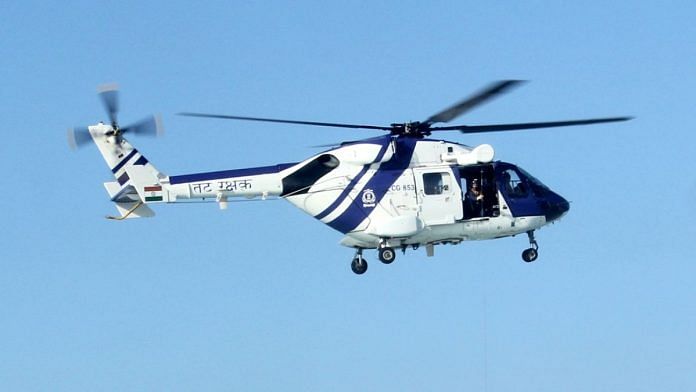Bengaluru: A fractured swash plate has been identified as the cause behind the crash of the Coast Guard’s Advanced Light Helicopter (ALH) Dhruv on 5 January, which claimed the lives of three personnel. The incident has led to the grounding of the entire fleet of 330 helicopters across the services.
The fleet will remain grounded for at least three more weeks until the Defect Investigation Team submits its report.
“The preliminary investigation suggested that the crash was caused due to a fracture in the swash plate of the helicopter. However, the Defect Investigation Team is conducting a detailed probe into the reasons for the crash. It is expected to submit its report in three weeks, following which we will take a call on resuming operations of the ALH,” D.K. Sunil, chairman and managing director of Hindustan Aeronautics Limited (HAL), said on the sidelines of Aero India.
He stated that the ALH fleet, across all three variants, has flown a total of approximately 4.5 lakh hours and has seen 28 crashes since its induction 25 years ago. Of these, 13 crashes were due to technical reasons, another 13 were attributed to human error, while the reasons for two could not be ascertained.
Asked about safety concerns, the chairman asserted that there was no fault with the design of the helicopter, which has been certified by a Netherlands-based firm.
He suggested that training and maintenance could largely be responsible for the technical faults. “However, we are working with the Indian Coast Guard to examine their maintenance practices and determine whether any changes are required.”
Sunil noted that in the past, there had been an issue with the control rod, following which the design was modified across the fleet.
He was referring to a component called the “collective,” which controls the power to the rotors and back. ThePrint was the first to raise concerns over the “collective” as early as 2022.
Following multiple accidents in 2023, a top government regulatory body responsible for certifying military aircraft undertook a full review of the ALH fleet. At the time, a source had told ThePrint that the replacement of the collective had been recommended.
The indigenously designed and developed ALH Dhruv is a twin-engine, multi-role, multi-mission new-generation helicopter in the 5.5-tonne weight class. Dhruv has three variants—Dhruv Mk-I, Mk-II, and Mk-III. The Dhruv Mk-IV is an armed version of the ALH.
(Edited by Radifah Kabir)
Also Read: With improved avionics & ultra-modern cockpit, HAL upgrades Hindustan Jet Trainer-36 to ‘Yashas’






